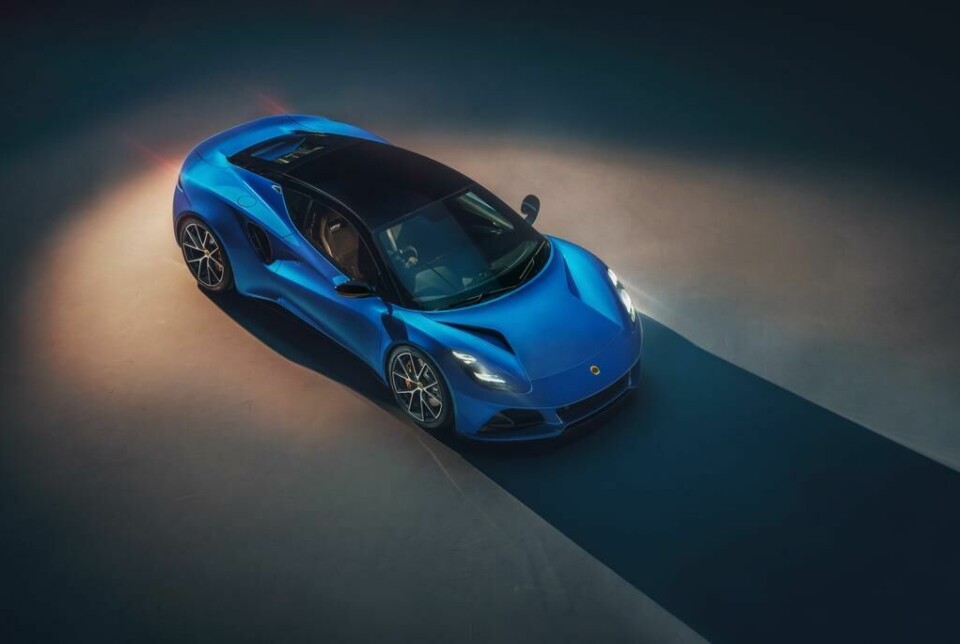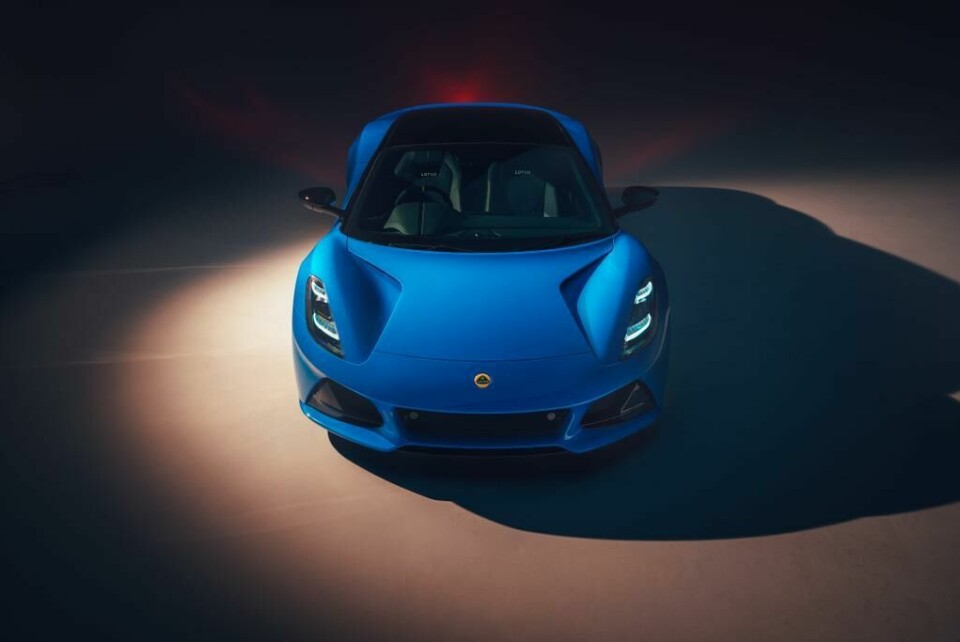
Return to the ICE age: Lotus launches the petrol-powered Emira
Though it speaks a design language set out by EV hypercar the Evija, Lotus’ newest effort, the Emira is a potent petrol-powered junior supercar. And the Geely-owned OEM wants to sell lots of them.
At a ritzy event at its Hethel headquarters in rural Norfolk, Lotus unveiled the Emira – a combustion engine sports car. Yes, you heard that right, in a moment where all the talk is of EVs, the Geely-owned Marque has run counter to the established narrative with a mid-engine looker it claims is the ‘most accomplished Lotus ever made.’
Built on the OEM’s new sports car architecture – a lightweight bonded aluminium chassis – the Emira derives its fluid surfaces and sharp feature lines from the Evija hypercar. Whereas the Evija was a halo project intended to re-establish Lotus as a premium player, the Emira, which borrows an 2.0-litre engine from AMG, is aimed at a wider audience. Lotus says it will make 4800 Emiras a year at its Hethel premises, which has received a £100 million revamp.

The Emira follows a lineage set by the Elise, Exige and Evora all of which were on display at the launch party. The OEM clearly believes it is onto a winner – F1 champ Jensen Button played a starring role at an event attended by an online audience of international superfans united by the obligatory social media hashtag. And as a cavalcade of historic models, including the F1 face car complete with cigarette branding, circled the crowd in driving rain, Lotus managing director Matt Windle hammered home the message – Lotus is a global player in the premium performance market.
So what of the design? Well, at first glance it feels suitably potent. An array of creases, sculptured cutaways and vents give the Emira a muscularity that is enhanced by the car’s wide stance. The front end is defined by a pair of blade-like vertical headlights that flank two boomerang-shaped exit vents in the hood. The cabin sits low and tapers back to the haunches. In profile, a section cut into the door leads air flow into the engine bay. The rear starts well with each corner featuring a C-shape of LEDs linked by a slim brake light. However, lower down a coal-black section which accommodates an air diffuser and twin exhaust pipes, could have been better resolved.
On the day, design director Russell Carr, who oversees a core team of 25, was at pains to push the everyday usability of the Emira. The rawness of its forebears has given way to a pretty plush interior. Though there is a screen, most essential functions – climate, radio etc – are within easy reach either on the steering wheel or on the centre console. “Pretty much everything there is a hard button for you can do through the screen as well. Everything we do is about form and function. It is about the aesthetic, together with the functionality,” says Carr. There are even, Carr points out, cupholders.
The wraparound dash blends into the door trim to create a cocoon-like feel. Soft touch materials and fabrics abound – the seats are designed to hold you in place for high-speed cornering but also capable of supporting you on a long journey. There is a screen, which is kept deliberately unobtrusive. “There is a clarity of it in terms of what is important to the driver. We are not making it like a game – gamification is pushed to one side. There’s great technology there but keeping it clean and clear. You are not playing a game, you are driving a car,” says Simon Clare, executive director of global marketing. There are also subtle nods to the Lotus heritage: the gearstick on the manual version echoes that of the Esprit while the partway exposed gear linkage on the V6 iteration recalls the Elise and Exige.
Is the Emira the gamechanger Lotus wants it to be? Well, if nothing else, it is a signal of the confidence Geely has in the new regime. Managing director Matt Windle admits that in the early days of his tenure, management were paying very close attention as to what was going on at Hethel. “There was a vacuum in management, in people and in processes.” But as the structure bedded in, the reins loosened.
“I think Lotus has been guilty of engineering a car and then tried to persuade customers they need to buy it. This is the first car where we have done extensive market research with clinics in China, America, Germany. We’ve invested money in actually finding out what people want in this car.”
Windle has high ambitions for Lotus. A self-confessed mechanics man, he has his sights set on growing Lotus Engineering, which is key to the development of the Emira. “We could have looked at taking platforms from our sister companies, but they didn’t give us the dynamics or the weight, so we pulled together a strategy with Geely to develop our own platforms.”
And with Geely, there is a financial power that opens doors. For example, Lotus worked with LG on the software, a conversation that would have been impossible given the volumes Lotus deals in. But with the financial backing, which has delivered everything from new IT systems, power rings and an automated paint shop, comes expectation. As Windle points out, Geely was on track to build 2 million cars last year but for the pandemic. While not operating at anywhere near that scale, Lotus will have to justify the £100 million investment in sales.
“The Evija relaunched the brand and set the design language we knew was coming for this car. The Emira is to get us into new markets as well as existing ones with high volume. It is also where we want to go with quality, industrialisation, and infrastructure. It is not just a product; it is all of those things,” says Windle.




















